June 30, 2025

The article titled '10 Supervisor Interview Questions and Answers for ABA Roles' emphasizes the crucial competencies and insights that supervisors must possess in the field of Applied Behavior Analysis (ABA) therapy. In a job market where the demand for Board Certified Behavior Analysts (BCBAs) is rapidly growing, understanding the following areas is essential for effective supervision:
These skills not only enhance the supervisory process but also contribute to the overall success of ABA therapy practices. As you consider the challenges in hiring qualified supervisors, reflect on how these competencies can transform your team's effectiveness. Utilizing a platform like Hire ABA can streamline your recruitment process, ensuring that you find the right candidates equipped with these vital skills.
The landscape of Applied Behavior Analysis (ABA) is rapidly evolving, with a projected 25% increase in the demand for Board Certified Behavior Analysts (BCBAs) by 2026. This surge presents both challenges and opportunities for supervisors in the field. They must navigate complex leadership dynamics and foster effective team collaboration. As organizations strive to enhance their hiring strategies, understanding the nuances of supervisory roles becomes crucial.
How can aspiring supervisors prepare for interviews and demonstrate their capability to lead in such a competitive environment?
The demand for Board Certified Behavior Analysts (BCBAs) is projected to surge by 25% by 2026. In this growing landscape, Hire ABA emerges as a specialized recruitment platform designed to connect BCBAs with premier job opportunities in the field of Applied Behavior Analysis (ABA). This platform not only enhances the hiring process for job seekers but also provides significant advantages for employers seeking top talent.
With tailored resume evaluations and advanced job fit ratings, Hire ABA ensures that skilled individuals find positions that align with their expertise and career aspirations. Are you facing challenges in your current hiring process? Consider how Hire ABA can streamline your recruitment efforts and help you build effective teams in ABA environments.
In a competitive market, utilizing Hire ABA is essential for leaders committed to excellence. This platform stands as a reliable resource, empowering both candidates and employers to navigate the evolving landscape of ABA with confidence. Take action today—explore how Hire ABA can transform your recruitment strategy and meet the rising demand for BCBAs.
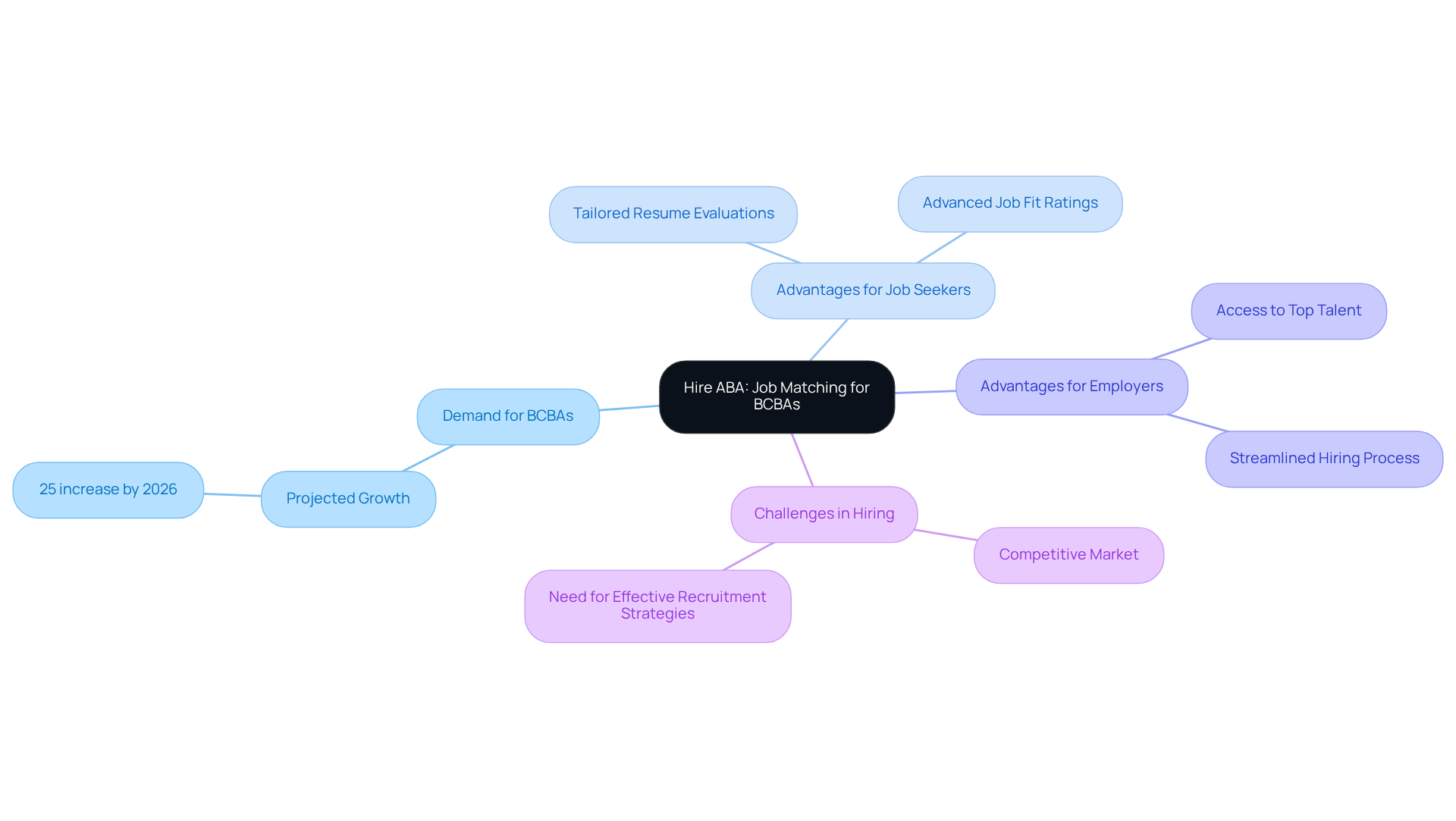
When interviewing for supervisory roles in ABA therapy, understanding your leadership style is paramount. Common styles, such as autocratic, democratic, and transformational leadership, each carry distinct advantages and disadvantages. The success of a manager often hinges on their ability to adapt their style to meet the needs of their team.
For instance, a transformational leader can inspire and motivate their group, while a democratic leader fosters collaboration and values input from team members. Recognizing these styles is essential for managers aiming to cultivate a cohesive and productive work environment.
Are you prepared to reflect on your leadership style and its impact on your team?
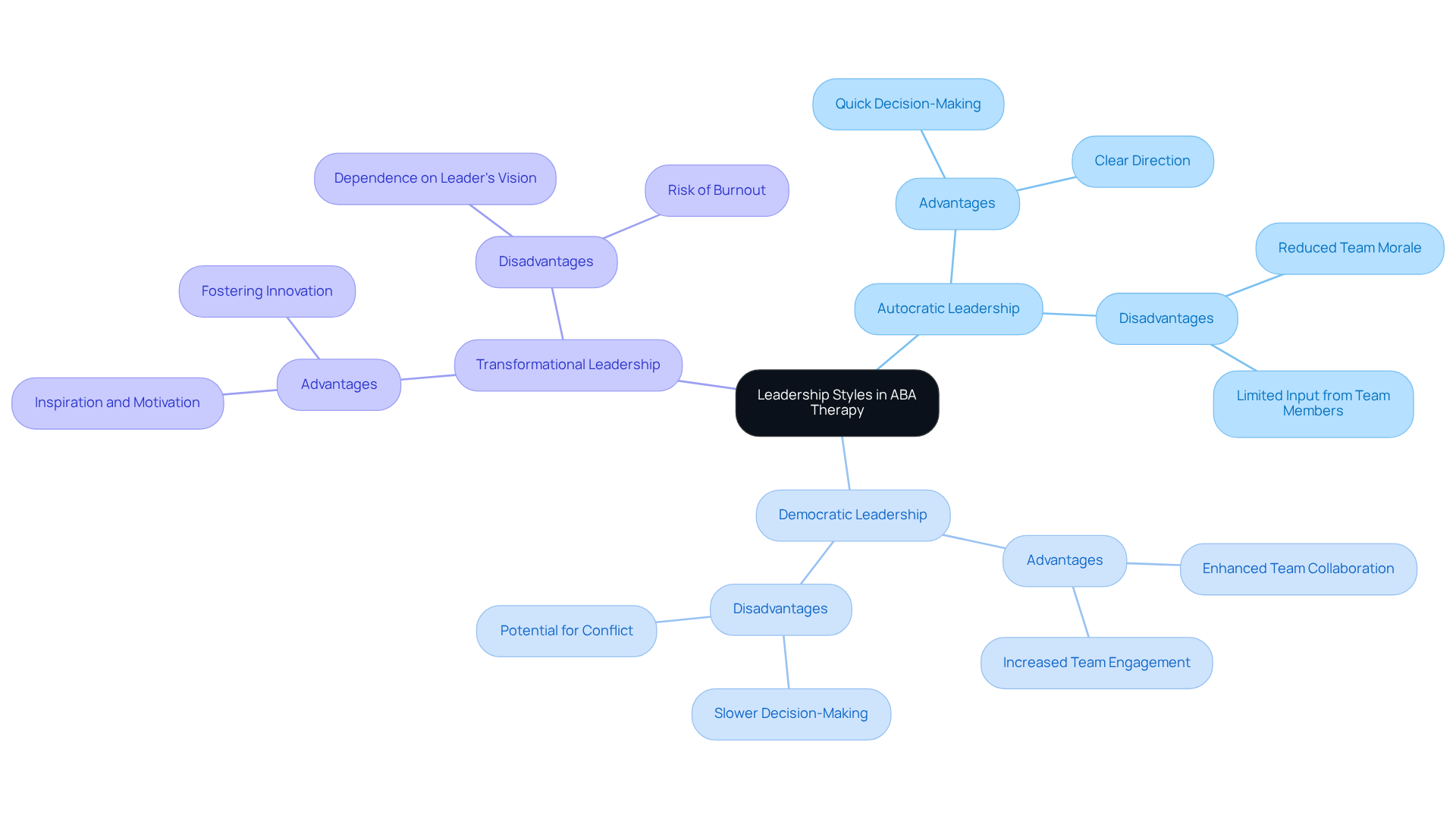
Effectively managing conflict among group members is a crucial duty for leaders in ABA therapy environments. Successful conflict resolution strategies include:
For instance, a manager may conduct a mediation session where each individual can voice their concerns, leading to a collaborative search for mutually agreeable solutions. This approach not only addresses the immediate conflict but also fosters a culture of respect and collaboration within the group.
Research indicates that organizations with engaged employees experience 18% higher customer retention rates, while disengaged employees cost organizations between $450 billion and $550 billion annually. Furthermore, implementing structured conflict resolution processes can significantly reduce the attrition rate of disengaged employees, which is 12 times higher than that of engaged workers. By prioritizing communication and understanding, supervisors can transform conflicts into opportunities for growth and enhanced group dynamics. As Jeremy Pollack states, "Every manager in every company, small or large, knows the prevalence of conflict among coworkers.
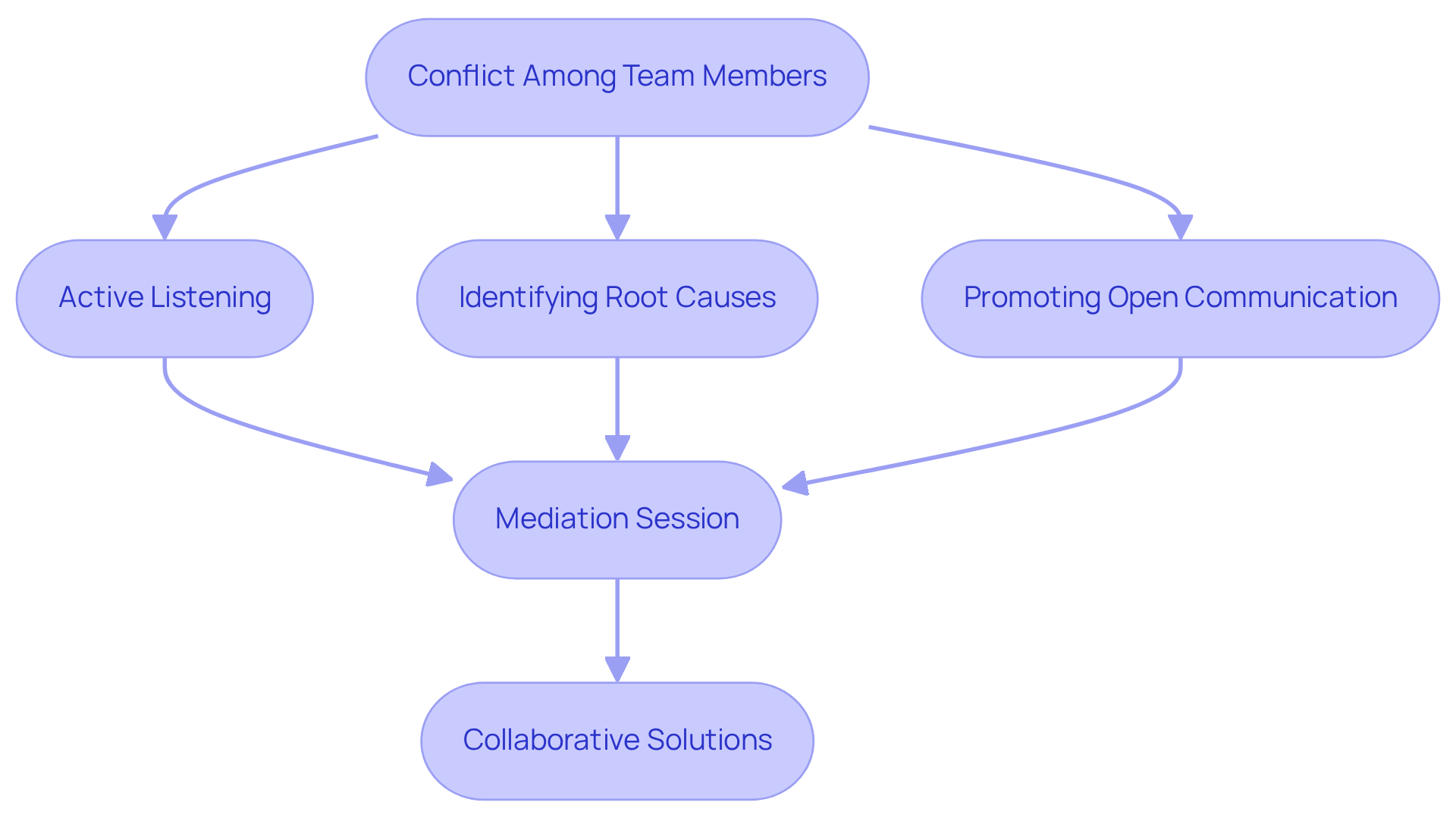
The demand for Board Certified Behavior Analysts (BCBAs) is projected to increase by 25% by 2026, underscoring the critical need for effective collaboration in ABA therapy environments. Encouraging collaboration among members is essential. Supervisors can foster a cooperative environment by:
For instance, including group-building activities not only fortifies interpersonal connections but also improves communication and collaboration among members. Celebrating group achievements further strengthens unity and purpose, ultimately resulting in enhanced outcomes in treatment environments.
Studies show that efficient group-building exercises can markedly enhance workplace productivity, rendering them an essential element in the success of ABA support groups. As Millie Masterson asserts, 'Reaching goals and objectives in a corporate setting relies significantly on the capability of your group and the individuals surrounding you.' The importance of effective teamwork in meeting the increasing demand for BCBAs cannot be overstated. Are you facing challenges in hiring the right talent? Consider how a collaborative approach can address these issues and elevate your practice.
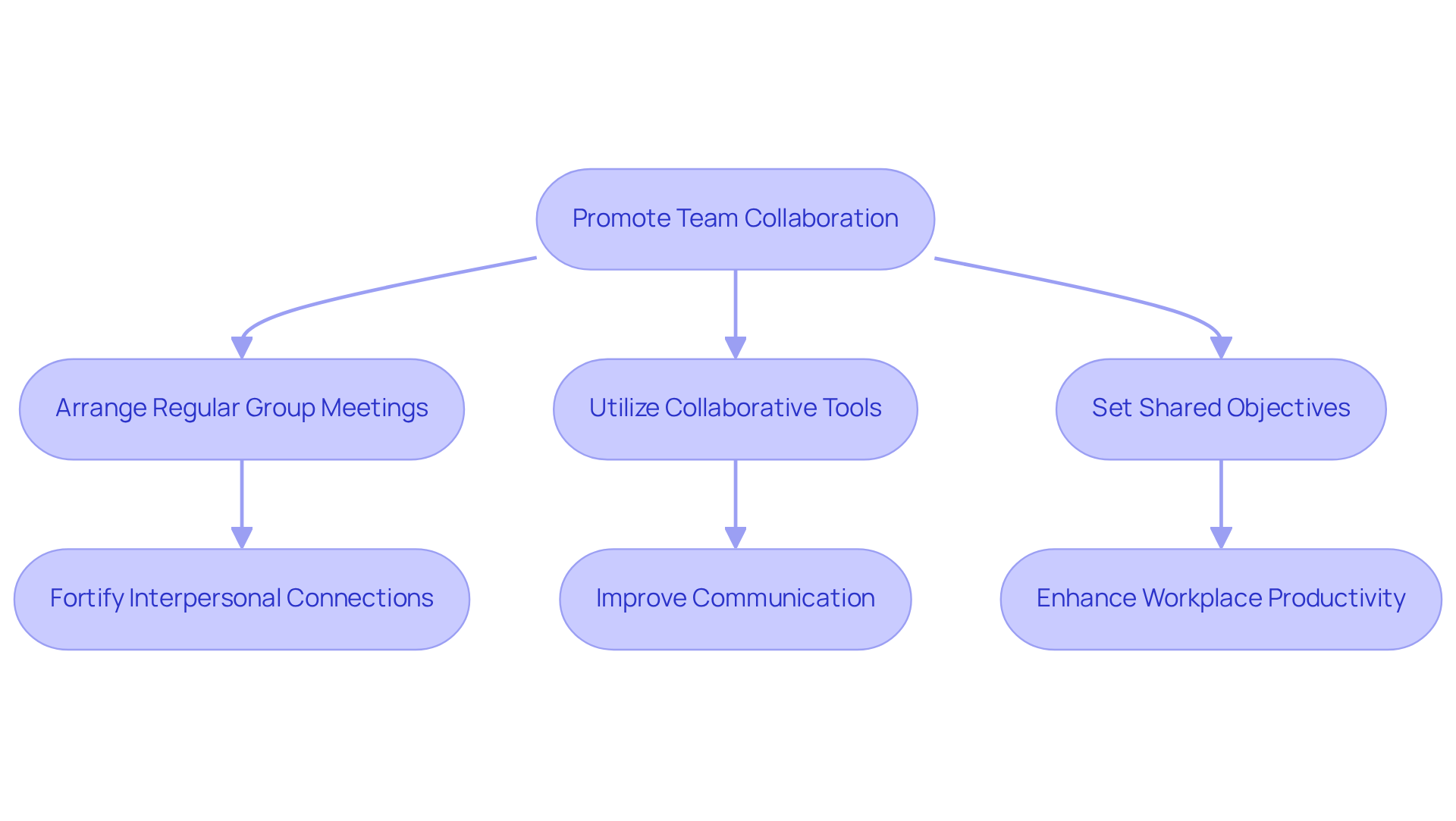
Flexibility is paramount for leaders in ABA therapy, as they frequently encounter shifts in regulations, client requirements, and group dynamics. An effective manager must adapt swiftly, which may involve:
For instance, during the transition to telehealth services, leaders were tasked with providing additional training and resources to ensure their teams could deliver effective care remotely. As Edmund Willis observed, "Maldaba’s adaptability, clear communication, and understanding of user needs and pressures were all critical to making rapid progress amid changing hospital discharge guidance and the pandemic." This proactive strategy not only supports staff but also enhances the quality of care delivered to clients.
Moreover, the Pathways To Care (P2C) project illustrated that effective supervision and adaptability can yield significant administrative savings of £72k and efficiency savings of £85k. By cultivating a culture of flexibility, supervisors can adeptly navigate the complexities of the ABA environment, ensuring that both their teams and clients thrive amidst change.
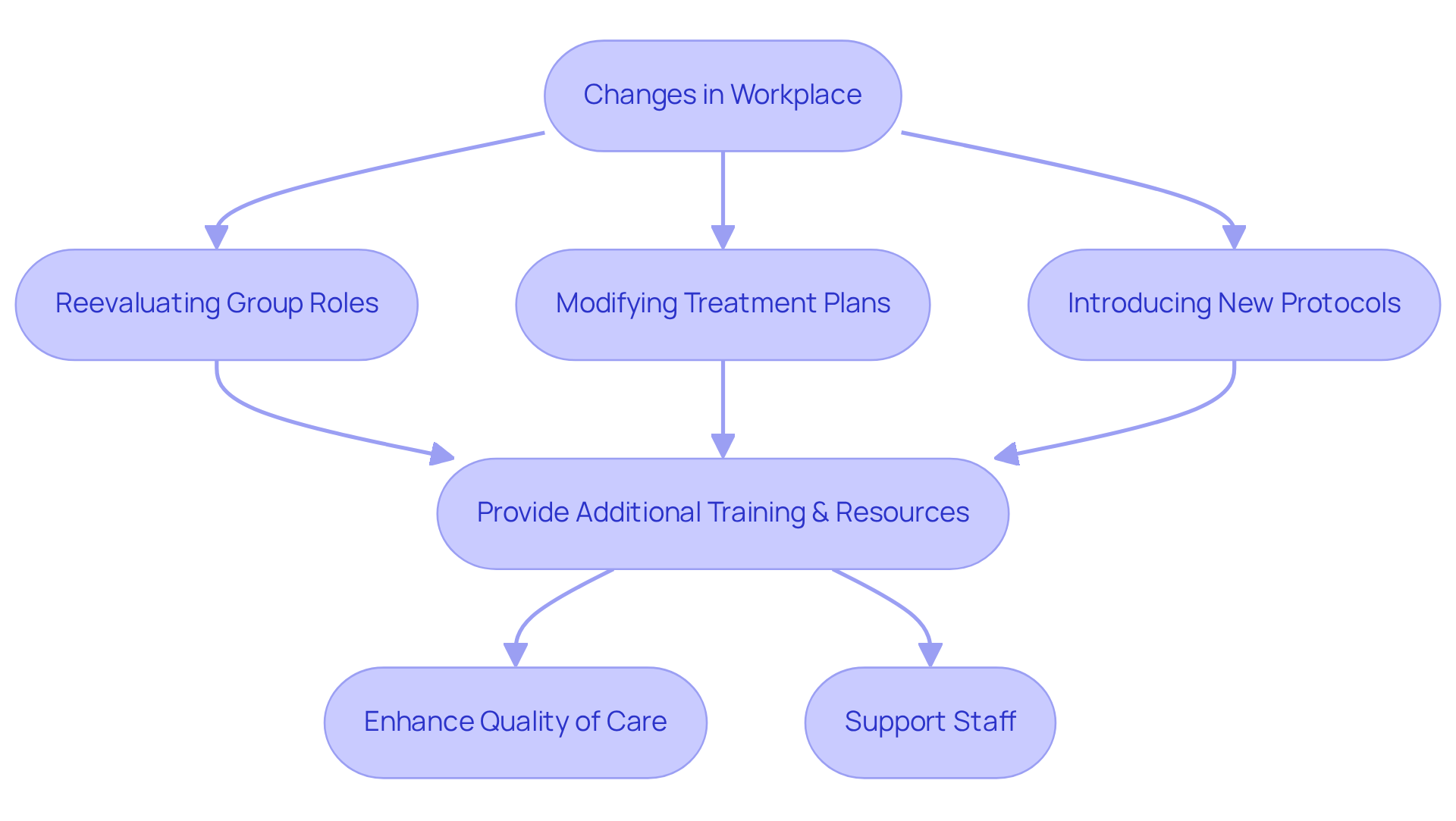
Assessing employee performance in ABA treatment demands a systematic approach, characterized by clearly defined metrics that align with both organizational objectives and client outcomes. Consider this: approximately 66% of children referred for ABA therapy remain in services for 12 months. This statistic underscores the critical need for effective performance evaluations to ensure service continuity and enhance client outcomes.
Key performance indicators (KPIs) must encompass:
Regular performance reviews are not merely beneficial; they are essential tools for identifying areas in need of improvement and promoting professional development. For instance, managers can leverage a combination of quantitative data, such as client progress reports, alongside qualitative insights from peer reviews, achieving a comprehensive evaluation of an employee's performance.
This dual approach not only enhances accountability but also fosters continuous growth within the team, ultimately benefiting the clients served. Moreover, the significance of KPIs in evaluating performance and driving growth within ABA practices is reinforced through case studies, highlighting their role in informed decision-making.
Furthermore, understanding the impact of treatment duration on skill acquisition is vital, as it directly correlates with performance metrics and client outcomes. Are you ready to elevate your hiring strategy and ensure the best outcomes for your clients? Consider the reliability of platforms like Hire ABA to address your recruitment challenges effectively.
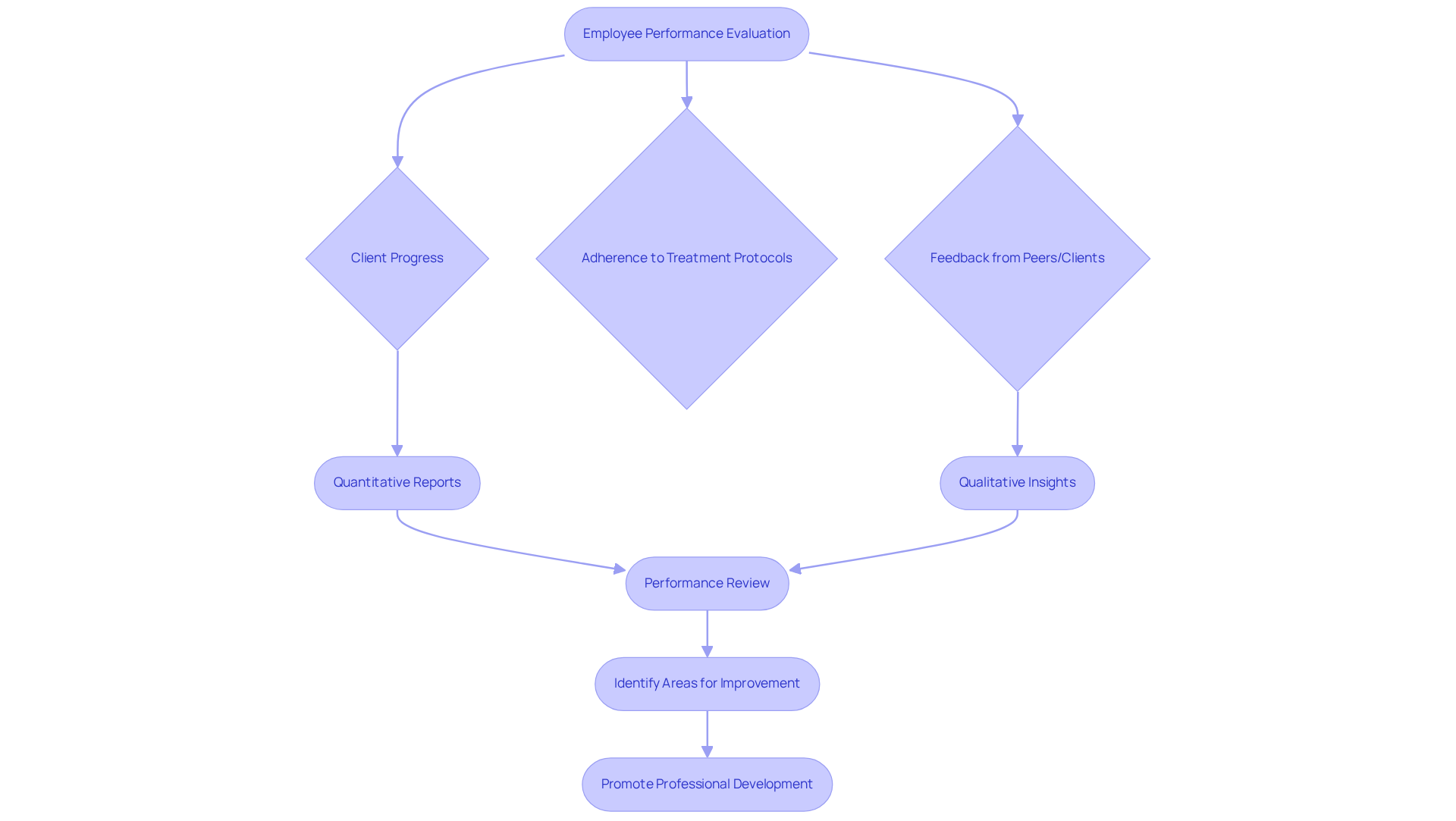
A supervisor's vision for group development must encompass both immediate and long-term objectives. This entails:
Implementing a mentorship program stands out as particularly effective; it not only supports junior staff but also fosters a culture of continuous learning. Such programs have been shown to enhance group performance by bridging generational gaps and facilitating the transfer of valuable knowledge. By promoting continuous education and training, managers empower their groups to remain competitive and efficient in delivering high-quality ABA services.
Industry leaders emphasize that mentorship is vital for professional growth, enabling individuals to realize their potential and navigate their career paths with confidence.
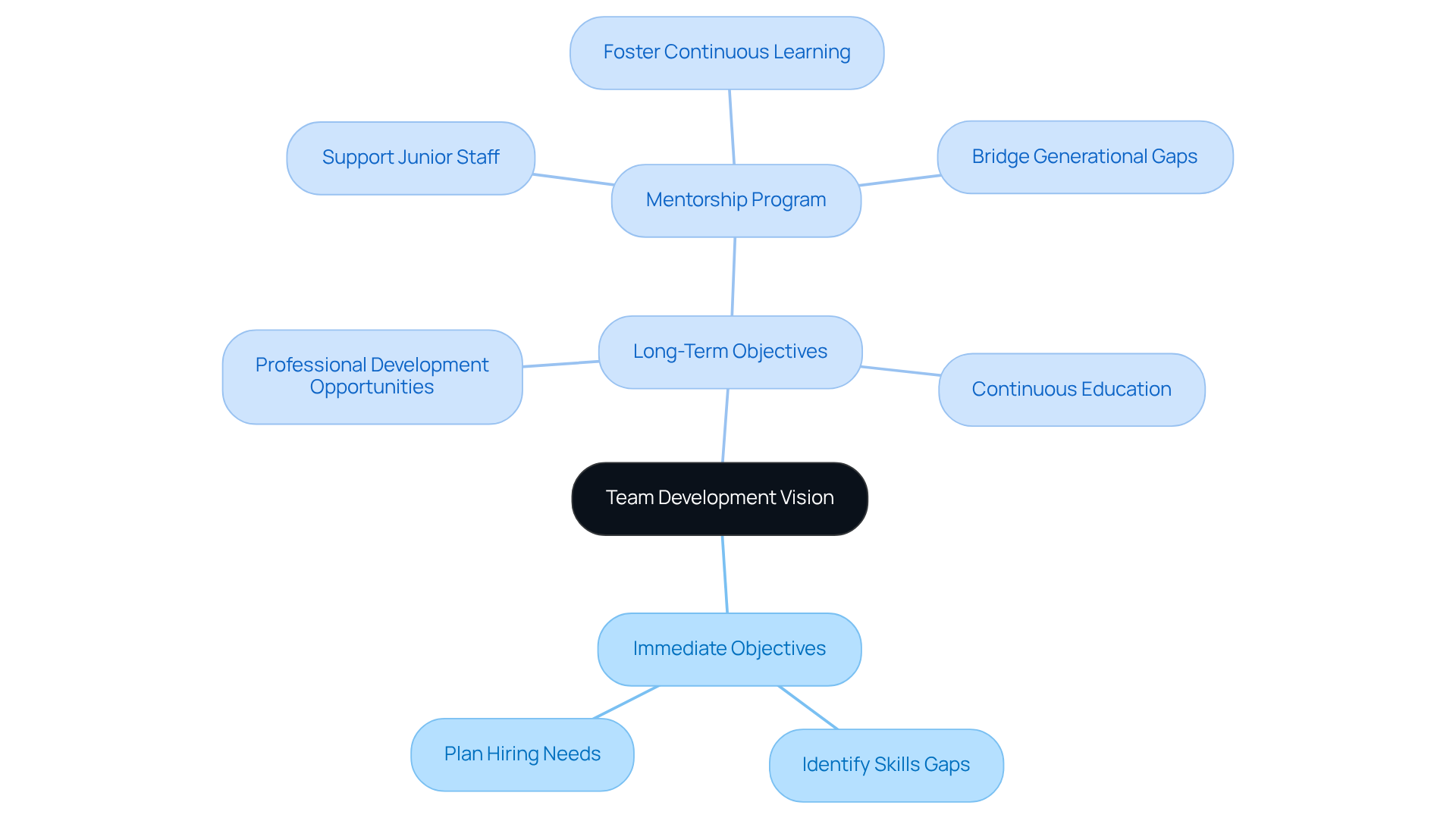
Constructive feedback is a crucial ability for leaders in ABA therapy, significantly impacting team performance and client results. Effective feedback should be specific, actionable, and delivered in a supportive manner. For instance, rather than simply stating that an employee's report was insufficient, a manager could articulate, 'I noticed that the data analysis section could benefit from more detailed explanations. Let's collaborate to enhance that part for future reports.' This approach not only addresses the issue but also fosters a culture of collaboration and continuous improvement.
Research indicates that overseers must complete an 8-hour supervision curriculum prior to overseeing RBTs, BCaBAs, or fieldwork candidates, underscoring the qualifications necessary for effective oversight. Moreover, individuals with BCBA certification demonstrate approximately 73.7% more mastery of objectives per hour compared to their non-certified peers, highlighting the importance of qualified oversight in achieving high-quality results. Additionally, treatment hours alone account for 32% of the variance in mastery of learning objectives, emphasizing the critical role of both supervision and treatment hours in professional development.
Successful feedback techniques include regular assessments of supervisee performance, which aid in identifying areas for improvement and specific training needs. Tailoring feedback to each supervisee's skills and developmental stage enhances their competence and leads to improved client outcomes. By establishing an environment where feedback is normalized and regarded as a resource for development, managers can significantly enhance both employee performance and the overall quality of ABA services. As Ken Blanchard aptly states, 'Feedback is the breakfast of champions.
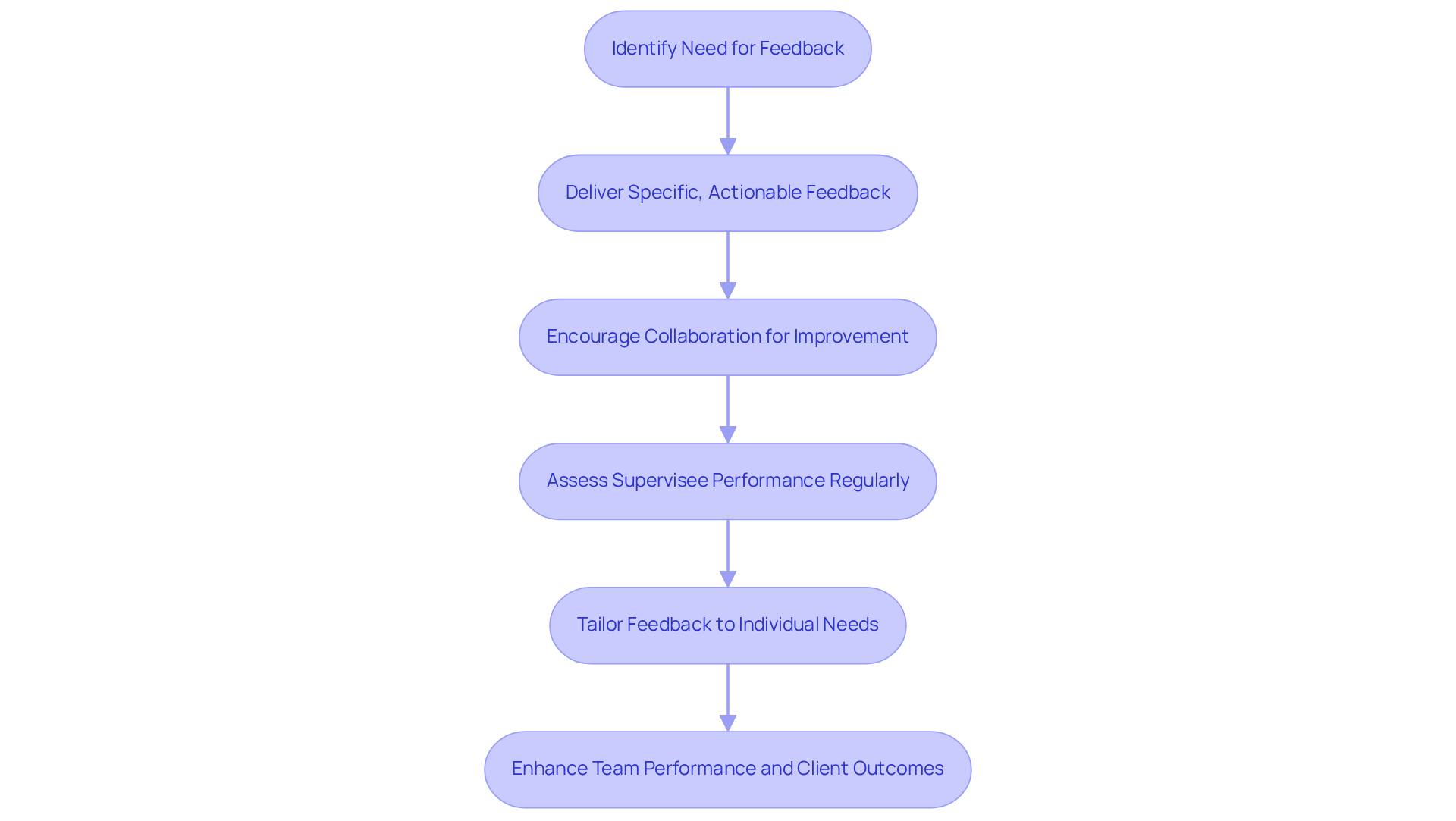
Efficient stress management is essential for leaders in ABA therapy, as their well-being significantly impacts group morale. Research indicates that only 19.35% of the wider site group consistently monitors their mental health and emotional well-being. This statistic underscores the critical need for supervisors to prioritize their mental health.
Implementing strategies such as:
can effectively mitigate stress levels. For instance, regular check-ins with group members facilitate discussions about workloads and proactively address concerns. Moreover, cultivating an atmosphere that emphasizes self-care and work-life balance not only enhances individual well-being but also contributes to a more positive and productive group environment.
The Gade Valley project group observed, "This has made a difference. There is more openness with more breaking down of barriers," highlighting the positive changes in workplace culture that can emerge from effective stress management. When leaders prioritize their mental well-being, it fosters enhanced collaboration and emotional intelligence among the group, ultimately benefiting the clients they serve.
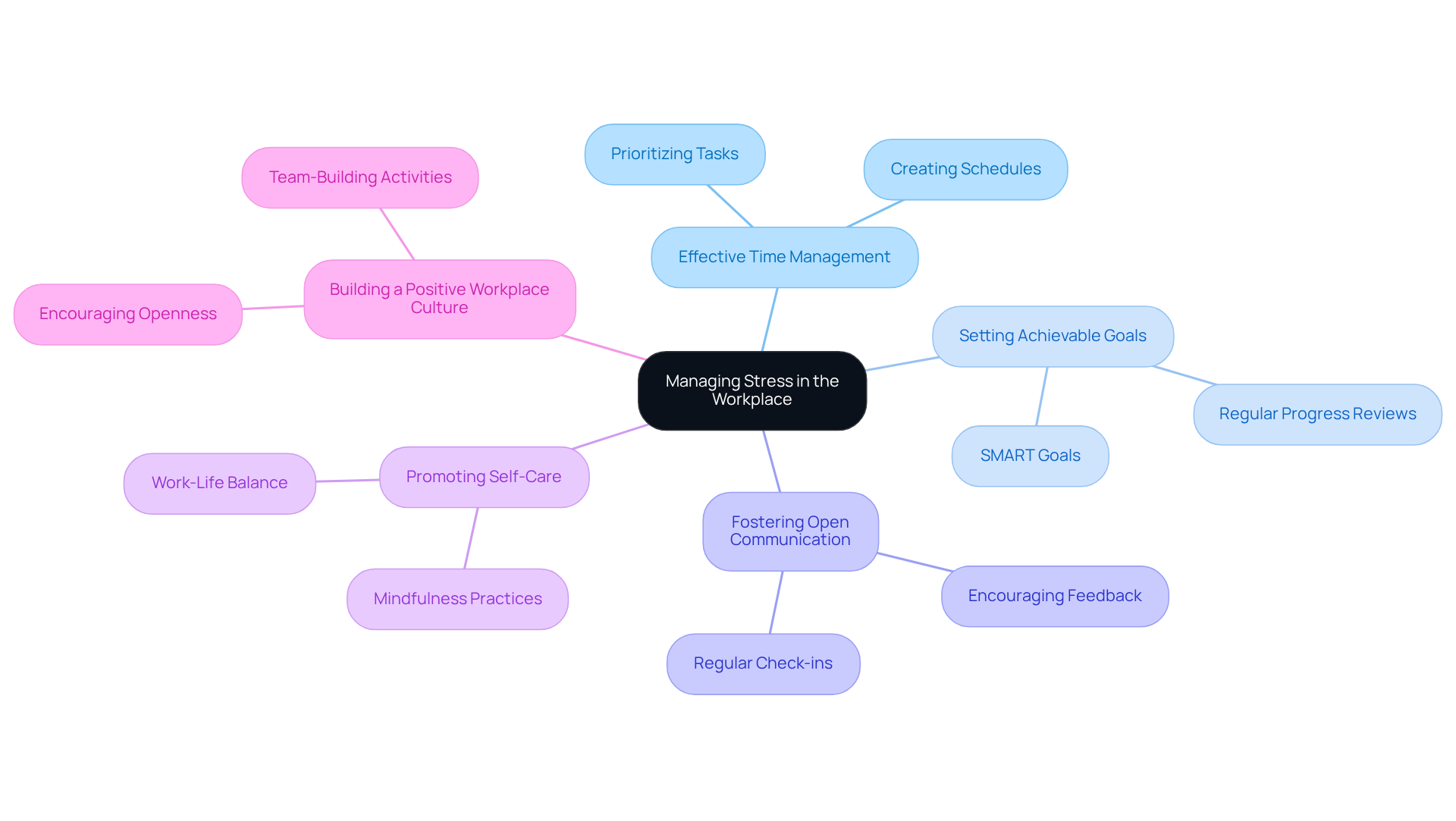
Did you know that the demand for Board Certified Behavior Analysts (BCBAs) is projected to rise by 25% by 2026? This statistic underscores the critical role that supervisors play in fostering professional growth within the rapidly expanding ABA therapy market, which is often highlighted in supervisor interview questions and answers. Their responsibility includes:
For example, a manager can develop a customized professional growth plan for each team member, detailing specific objectives and the necessary resources to achieve them.
Investing in the development of their teams not only enhances individual performance but also significantly boosts employee retention and contributes to the overall success of the organization. Ongoing education is vital in the ABA field, especially as professionals strive to stay abreast of best practices and innovative strategies that lead to improved client outcomes. By cultivating a culture of growth and development, supervisors empower their teams to seize the exciting opportunities that lie ahead in their BCBA careers, including:
As you reflect on your current hiring challenges, consider how Hire ABA can assist you in navigating this landscape. To stay informed about these opportunities, submit your resume and explore new roles in the ABA therapy market.
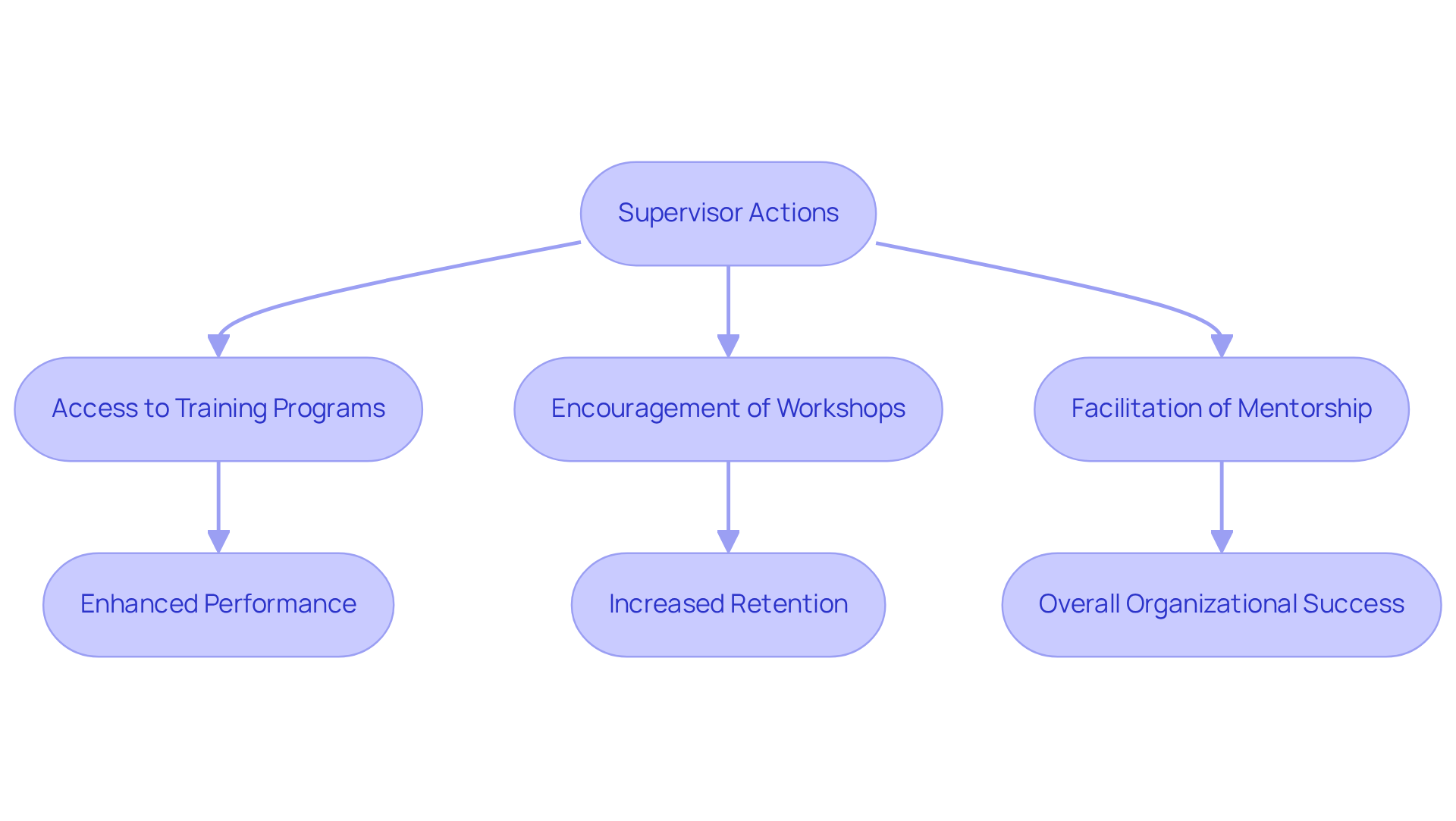
In the rapidly evolving field of Applied Behavior Analysis (ABA), the demand for Board Certified Behavior Analysts (BCBAs) is unprecedented, making the role of supervisors crucial for fostering effective teams and ensuring high-quality client outcomes. Understanding the nuances of supervisory approaches, from leadership styles to conflict resolution, has never been more critical. The insights shared in this article underscore the importance of adaptability, collaboration, and ongoing professional development in shaping a successful ABA therapy environment.
Key discussions highlight the significance of recognizing different leadership styles and their impact on team dynamics. Moreover, implementing structured conflict resolution strategies is essential for maintaining a harmonious workplace. Are you currently facing challenges in your hiring process? Promoting collaboration through regular team interactions and shared goals enhances productivity and morale. Equally important is the commitment to evaluating employee performance through clear metrics, fostering accountability and continuous growth.
As the landscape of ABA therapy evolves, embracing tools like Hire ABA can streamline the recruitment process, making it easier for organizations to find the right talent. The insights gleaned from this article serve as a reminder of the critical role supervisors play in nurturing their teams and adapting to the demands of the profession. By prioritizing leadership development, effective communication, and a supportive work environment, supervisors can not only enhance their team's performance but also contribute significantly to the quality of care provided to clients. Taking proactive steps in these areas will ensure that both supervisors and their teams are well-equipped to meet the challenges and opportunities that lie ahead in the ABA field.
What is Hire ABA and what does it offer?
Hire ABA is a specialized recruitment platform designed to connect Board Certified Behavior Analysts (BCBAs) with job opportunities in Applied Behavior Analysis (ABA). It enhances the hiring process for job seekers and provides advantages for employers by offering tailored resume evaluations and advanced job fit ratings.
Why is the demand for BCBAs increasing?
The demand for Board Certified Behavior Analysts (BCBAs) is projected to surge by 25% by 2026, indicating a growing need for professionals in the field of ABA.
How does Hire ABA benefit employers?
Hire ABA helps employers streamline their recruitment efforts by connecting them with top talent in the ABA field, allowing them to build effective teams.
What are some common leadership styles in ABA therapy?
Common leadership styles include autocratic, democratic, and transformational leadership. Each style has distinct advantages and disadvantages, and managers should adapt their style to meet the needs of their team.
How can understanding leadership styles impact team dynamics?
Recognizing leadership styles is essential for managers as it can influence their ability to inspire, motivate, and foster collaboration within their teams, ultimately leading to a cohesive and productive work environment.
What are effective strategies for resolving conflict among team members?
Effective conflict resolution strategies include active listening, identifying root causes of disputes, and promoting open communication. Conducting mediation sessions can also help address conflicts collaboratively.
How does employee engagement relate to conflict resolution?
Organizations with engaged employees experience higher customer retention rates, while disengaged employees can cost organizations significantly. Structured conflict resolution processes can reduce the attrition rate of disengaged employees, highlighting the importance of effective communication and understanding.
What impact can conflict resolution have on team dynamics?
Prioritizing communication and understanding in conflict resolution can transform conflicts into opportunities for growth and enhance group dynamics, fostering a culture of respect and collaboration.
Our expert recruitment strategies and AI-driven sourcing ensure that you receive top-notch candidates quickly, without compromising on quality. Whether you’re looking for BCBAs, Clinical Directors, or RBTs, we’ve got you covered.